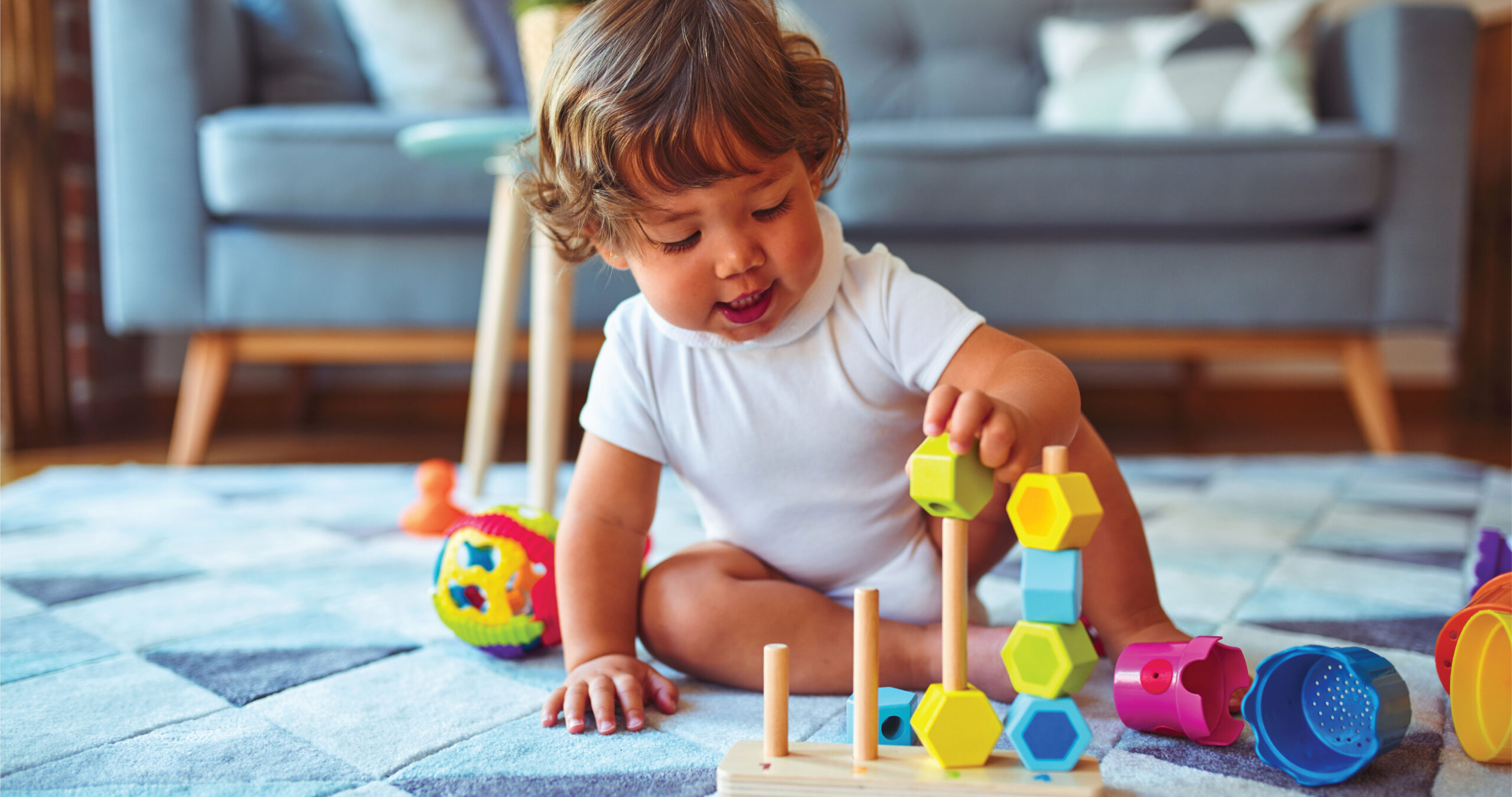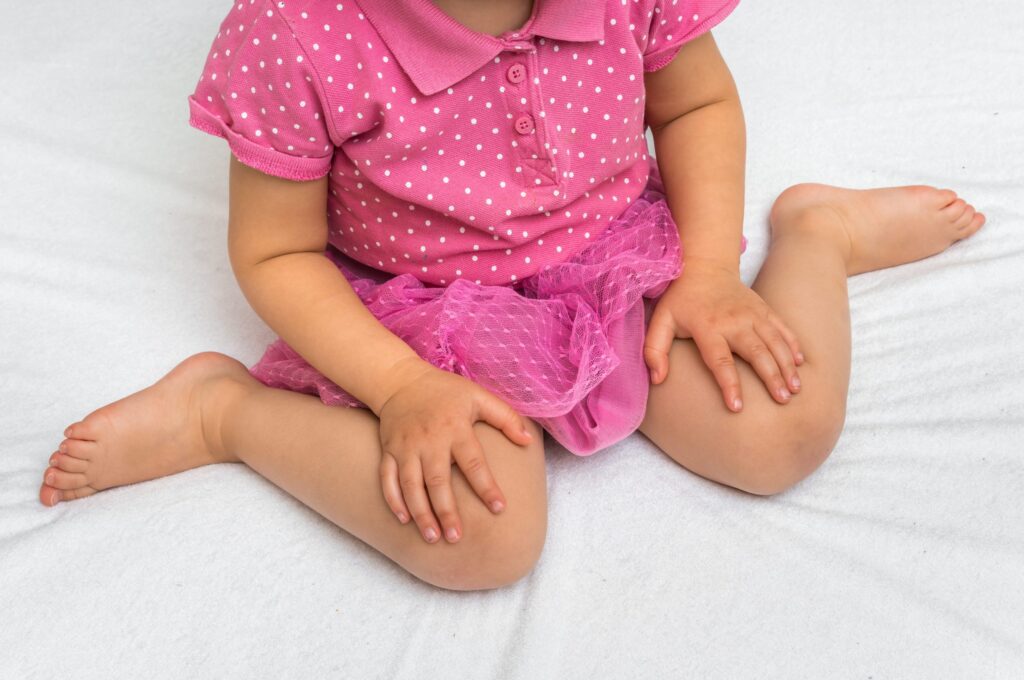Becoming a parent means you never stop worrying about your child – how well they’re eating, sleeping, growing, and developing to name just a few. You want to do whatever is best for your child so they can thrive.
Sometimes you might notice your child acting, saying, or doing something that’s quite different from what you’ve seen in other . If you’re reading this, you’ve likely heard your child “W” sits, or you’ve seen it and wonder if it’s normal. So, what is that exactly?
What is W Position Sitting?
W sitting in kids is a position where your child sits with their bottom on the floor, and their legs form a “W” around them. This sitting posture can look uncomfortable, but likely your child does it because it feels more comfortable for them!
W sitting can actually be a normal part of development. You may momentarily see your child move in and out of this sitting posture while playing on the floor. Children are constantly testing their balance, coordination, mobility, and their ability to explore. This exploration is how a child gains the skills and confidence to crawl, walk, and run. However, if your child consistently prefers W sitting, it might be worth observing if there are other signs of developmental concerns, such as toe walking.
When children stay in W sitting for a long period of time, it may be a sign they have some weak core muscles or low muscle tone. Sitting in the W position allows a child to turn off their belly muscles so they can focus on what they do best – playing!
Low muscle tone may mean your child has a harder time getting their trunk muscles to work the way they want. Low muscle tone alone isn’t a reason for concern. When low muscle tone is combined with weakness, it can make children less confident that their bodies will hold them up when trying to move in other ways, leading them to stay still for longer periods of time. This can lead to weakness in core muscles.
Is the W sitting position harmful?
W sitting alone isn’t harmful unless it’s the only position your child prefers. If you don’t see them moving and grooving in and out of multiple sitting positions, they aren’t gaining practice using all their muscles.
Potential effects of only being in the W sit position:
- Painful strain on your child’s hips, knees, ankles, and feet
- Muscle tightness
- Weakness in other muscles
- Inability to naturally begin to crawl and explore
Long-term, your child’s bones may begin to form in this position instead of straight. This may lead to:
- Hip dysplasia – The abnormal formation of the hip joint, which can cause pain and mobility issues later in life.
- In-toeing – A condition where the toes point inward, making walking and running more difficult and potentially leading to trips or falls.
- Rotation of the leg – The unnatural twisting of the leg bones, which can affect posture and gait.
Especially while children’s bones are growing, they should be moving in multiple directions and ways to allow bones and joints to develop appropriately. It might help to get them to try an to limit how much they .

At what age is W sitting a problem?
Sitting is a skill children typically achieve by the time they are 6-8 months old. Around this age, they will try a variety of positions before they find what feels best to them. They will move from sitting in a circle shape to being able to move in and out of sitting to the side sitting in preparation for crawling.
While the isn’t necessarily harmful to your child, it can become or create a problem. W sitting can be a problem when it’s one of the only positions your child prefers. It can delay crawling and walking in babies and toddlers. It doesn’t allow for easy movement in and out of the position due to the position of the legs. When they’re not moving in and out of a , it could impact the development of their and contribute to in the .
The W sit position is especially concerning in older children who should already be crawling or walking, if they are unable to play or move out of this poor posture, or if they have an underlying medical issue. If any of the above is true, it may be time to discuss it with your child’s doctor.
See related: Toe Walking in Children: A Guide
How do you treat W sitting?
Before talking to a or taking them to an , parents might be able to help with the . Parents can do a lot to help their children explore new ways of moving and sitting! Children respond best to a verbal reminder “fix your legs” followed by showing them how you’d like them to sit. This alternative position can be criss-cross applesauce, sitting with legs out straight, it’s up to you! They’ll quickly learn what you mean when you repeat the phrase, and they will be able to self-correct more easily.
If your child isn’t able to move out of this position easily, they may need a little help. You can place favorite objects just out of your child’s reach to promote moving out of their position of comfort and exploring new movements. Getting them to move out of that is what’s important, but it’ll also help improve their leg and as well.
How pediatric physical therapy can help
The early ages of life are when children are developing , leg and , mobility, and more. So, children need to explore the world using many different positions and movements. If they seem “stuck,” they may need help learning how to move their body. During pediatric physical therapy and occupational therapy, your therapist will do a thorough evaluation and assess your child’s strengths and areas of improvement related to their gross motor skills development.
They will then create a plan made specifically for your child to reach the goals you have in mind. Through play, the physical therapist will allow your child to safely explore their world while training their bodies at the same time. If you’re not quite sure your child needs rehabilitation physical therapy, you can schedule a free screening at any of our pediatric locations and one of our pediatric experts will observe your child and share their recommendations for your child.
Article By: Sarah Goncalves, PT, DPT, PhD(c), PCS, CI
Sarah began their physical therapy career 11 years ago. Sarah loves working with the pediatric population and believes in the importance of empowering parents with the information they need to allow their children to thrive. She currently specializes in child development, toe walking, and rehabilitation research. She currently works with pediatric therapists across the country to promote best practices and current evidence through mentorship and education.






